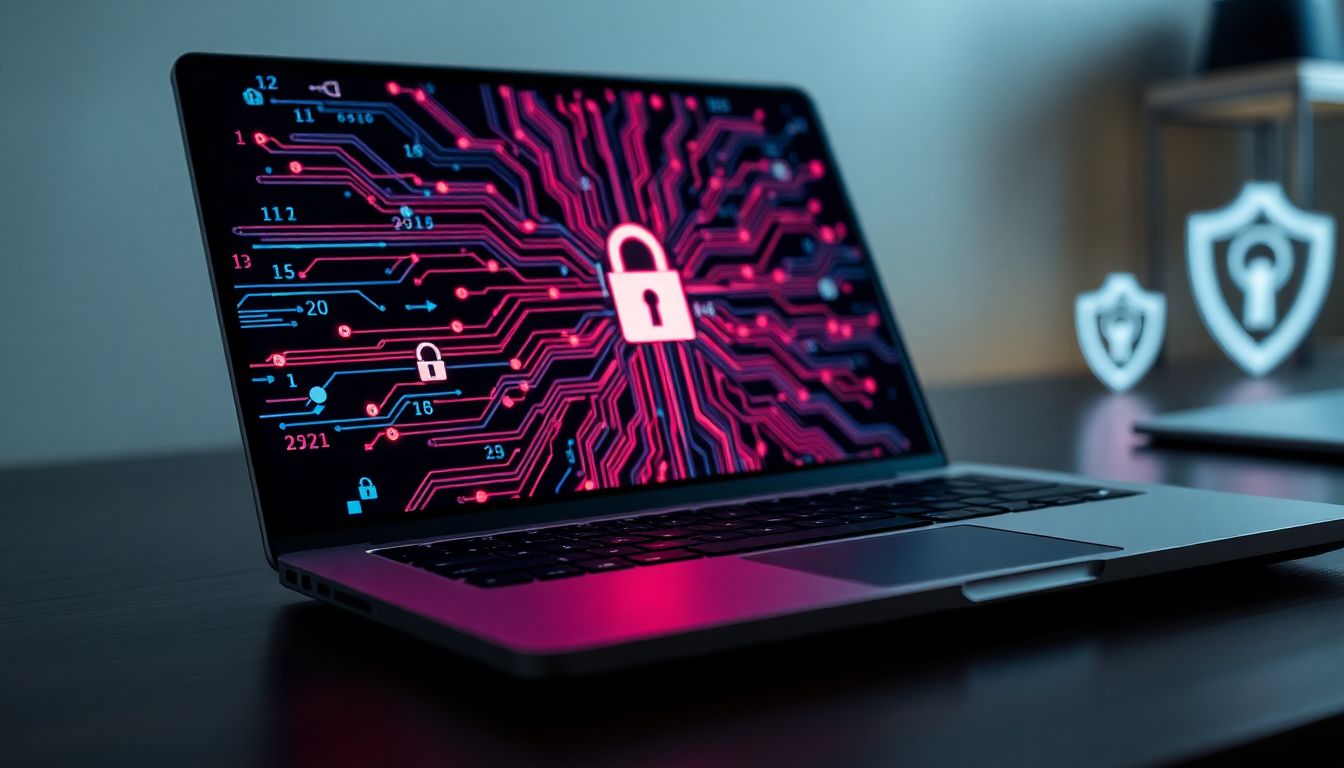How to Fortify Your Laptop Against Malware Attacks

Every day, malware attacks threaten millions of laptops, leading to significant financial loss and data breaches. According to cybersecurity experts, nearly 70% of small businesses experienced a malware attack in the past year. Malware comes in many forms, including viruses, ransomware, and spyware. Understanding how these threats work is essential for protection. This article provides a comprehensive guide on securing your laptop against various malware threats.
Bolstering Your Laptop's Defenses: Software Security
Antivirus Software: Your First Line of Defense
Choosing a reliable antivirus program is crucial. Programs like McAfee, Norton, and Bitdefender are well-respected in the cybersecurity world. Regular updates and scans can keep your laptop safe from the latest threats. Features such as real-time protection and malware removal tools help detect and eliminate malicious software before it can cause harm.
Firewall Protection: Controlling Network Access
A firewall acts as a barrier between your laptop and potential threats from the internet. Built-in options like Windows Defender Firewall provide solid protection. Third-party firewalls also offer additional features. Ensure your firewall is enabled and properly configured for maximum security.
Operating System Updates: Patching Vulnerabilities
Operating system updates are vital for protecting your laptop from malware. Many attacks exploit outdated software, like the infamous WannaCry ransomware attack, which targeted unpatched Windows systems. Enabling automatic updates ensures your system remains shielded against new vulnerabilities.
Safeguarding Your Browsing Habits: Online Security
Beware of Phishing Scams: Recognizing and Avoiding Threats
Phishing scams are prevalent and can trick even the most cautious users. Look out for suspicious links and urgent requests for personal information. Real-world examples include emails that appear to be from banks or service providers. The FTC provides valuable resources for identifying these scams. Always think twice before clicking links in emails.
Secure Browsing Practices: Protecting Yourself Online
Using strong, unique passwords for your online accounts is essential. A password manager can help you create and store complex passwords securely. Whenever possible, enable two-factor authentication to add an extra layer of protection to your accounts.
Careful Website Navigation: Avoiding Malicious Sites
Be cautious when visiting websites you do not recognize. Always check for HTTPS in the URL and verify website security certificates. Avoid clicking on unknown links or downloading files from untrusted sources, as these actions can lead to malware infections.
Data Protection Strategies: Safeguarding Your Information
Regular Backups: Protecting Against Data Loss
Regular data backups are critical in preventing data loss from malware. Options like cloud storage or external hard drives provide reliable backup solutions. Choose a backup system that fits your needs and ensures your data remains safe.
Strong Passwords and Authentication: Securing Your Accounts
Creating strong passwords is one of the easiest ways to keep your accounts safe. Use a password manager to help manage your passwords effectively. Always employ two-factor authentication whenever it's available to add more security.
Data Encryption: Protecting Sensitive Information
Data encryption protects your sensitive information from unauthorized access. Tools like BitLocker for Windows and FileVault for macOS make it easy to encrypt your hard drive and keep your data private.
Hardware Security Measures: Physical Protection
Physical Security: Protecting Your Laptop from Theft
Keeping your laptop physically safe is just as important as digital protection. Use a laptop lock when working in public places. Set a strong password for your device and stay aware of your surroundings to prevent theft.
Hardware Monitoring: Detecting Suspicious Activity
Regularly monitor your laptop's performance to spot unusual behavior that might indicate malware. Use tools to keep track of CPU usage, memory consumption, and network activity. If you notice anything out of the ordinary, investigate further.
Staying Informed: Cybersecurity Awareness
Regular Security Audits: Identifying Weaknesses
Performing regular security audits helps you identify vulnerabilities in your setup. Check your software, passwords, and security settings periodically. This practice can help you maintain a strong defense against new threats.
Staying Updated on Security Threats: Knowing the Latest Risks
Stay informed about the latest cybersecurity threats by subscribing to reputable news sources. Knowing what's out there can help you anticipate and defend against potential attacks.
Conclusion: To keep your laptop secure, implement a multi-layered approach. Use antivirus software, enable firewalls, and keep your operating system updated. Be cautious online, protect your data, and ensure your device is physically secure. Start applying these strategies today to fortify your laptop against malware threats.






No comments: